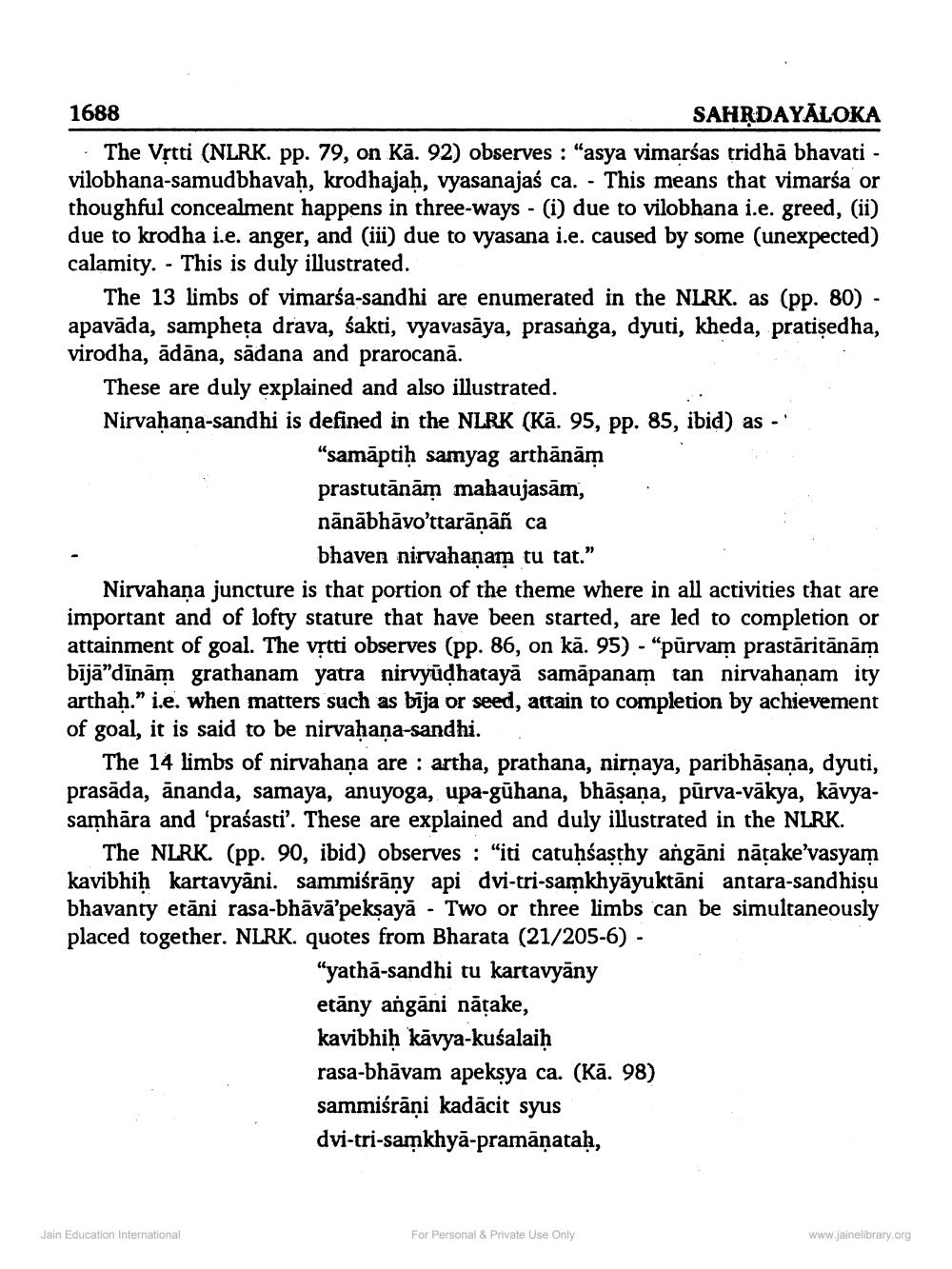________________
1688
SAHRDAYĀLOKA · The Vștti (NLRK. pp. 79, on Kā. 92) observes : "asya vimarśas tridhā bhavati - vilobhana-samudbhavah, krodhajah, vyasanajaś ca. - This means that vimarsa or thoughful concealment happens in three-ways - (i) due to vilobhana i.e. greed, (ii) due to krodha i.e. anger, and (iii) due to vyasana i.e. caused by some (unexpected) calamity. - This is duly illustrated.
The 13 limbs of vimarśa-sandhi are enumerated in the NLRK. as (pp. 80) - apavāda, sampheța drava, śakti, vyavasāya, prasanga, dyuti, kheda, pratiședha, virodha, adana, sadana and prarocanā.
These are duly explained and also illustrated. Nirvaḥaņa-sandhi is defined in the NLRK (Kā. 95, pp. 85, ibid) as -
"samāptiḥ samyag arthānām prastutānām mahaujasām, nānābhāvo'ttarāņāñ ca
bhaven nirvahanam tu tat.” Nirvahana juncture is that portion of the theme where in all activities that are important and of lofty stature that have been started, are led to completion or attainment of goal. The vrtti observes (pp. 86, on kā. 95) - "pūrvam prastāritānām bijā"dīnām grathanam yatra nirvyūdhatayā samāpanam tan nirvahanam ity arthaḥ." i.e. when matters such as bīja or seed, attain to completion by achievement of goal, it is said to be nirvahaņa-sandhi.
The 14 limbs of nirvahana are : artha, prathana, nirnaya, paribhāşana, dyuti, prasāda, ānanda, samaya, anuyoga, upa-gūhana, bhāsana, pūrva-vākya, kāvyasamhāra and 'praśasti'. These are explained and duly illustrated in the NLRK.
The NLRK. (pp. 90, ibid) observes : "iti catuḥśasthy angāni nāțake’vasyam kavibhiḥ kartavyāni. sammiśrāny api dvi-tri-samkhyāyuktāni antara-sandhişu bhavanty etāni rasa-bhāvā’peksayā - Two or three limbs can be simultaneously placed together. NLRK. quotes from Bharata (21/205-6) -
"yathā-sandhi tu kartavyāny etāny angāni nāțake, kavibhiḥ kavya-kusalaiḥ rasa-bhāvam apeksya ca. (Kā. 98) sammiśrāņi kadācit syus dvi-tri-samkhyā-pramāṇataḥ,
Jain Education International
For Personal & Private Use Only
www.jainelibrary.org




